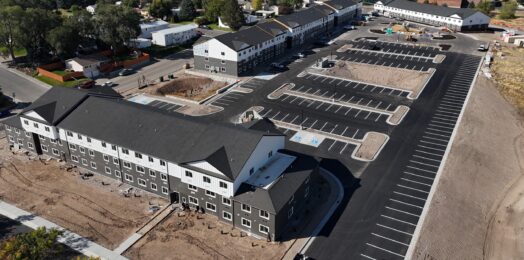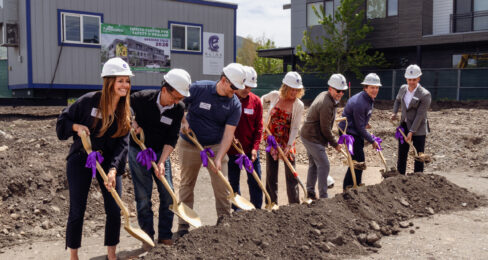In a quiet neighborhood north of downtown Idaho Falls sits Black Feather Apartments, a 156-unit development catering to Idahoans who struggle to find affordable rental homes.
More than 20 percent of Idaho’s approximately 200,000 renter households currently spend 50 percent or more of their income on rent. The state has a shortage of nearly 25,000 affordable and available homes for renters who earn less than 50 percent of the area median income.
Black Feather is one of 17 projects that benefited from the Workforce Housing Fund, which was signed into law in March 2022. It provided $50 million in what’s called “gap financing” for qualified developments throughout Idaho. First responders, educators, healthcare professionals and retail workers ultimately benefit from this first-ever investment in housing by Idaho.
Gap financing is a crucial piece of the complicated financial puzzle necessary to build and operate affordable rental homes. Existing financial tools such as Low-Income Housing Tax Credits, federal HOME funds and community investments only cover part of the cost. The Workforce Housing Fund fills the gap between the cost of building and operating a property and the revenue from rents that working households can afford.
Blake Jumper, the managing director of Tailwater Development, secured $4 million through the Workforce Housing Fund to help finance 126 of the Black Feather units. That money, along with an award of Low-Income Housing Tax Credits, allows Jumper to offer rents that are affordable for households that earn from 30 to 60 percent of the area median income. Developments like Black Feather would not have been possible without the Workforce Housing Fund, Jumper said. But there’s still a significant need for more funding, he said.
“We’re already behind the eight ball,” Jumper said. “The demand is there for more affordable housing in communities throughout the state. Unfortunately, every year that passes that there aren’t resources available, like the Workforce Housing Fund, we’re only falling further behind.” Black Feather was the first development with Workforce Housing Funds to open, with the first residents moving in last fall. In all, the Workforce Housing Fund will help add 1,131 rental units in rural and urban Idaho communities.









